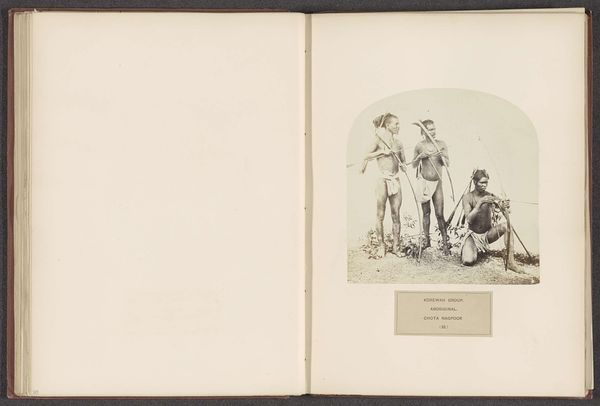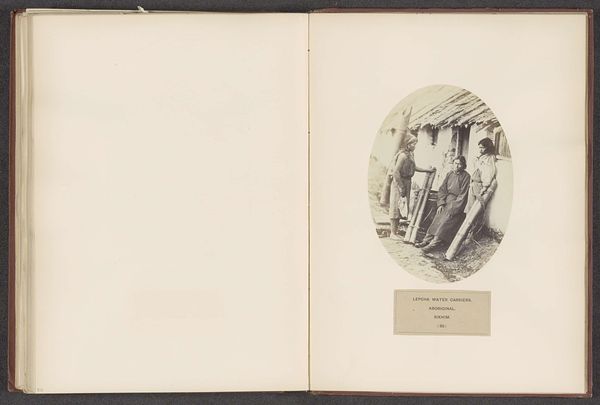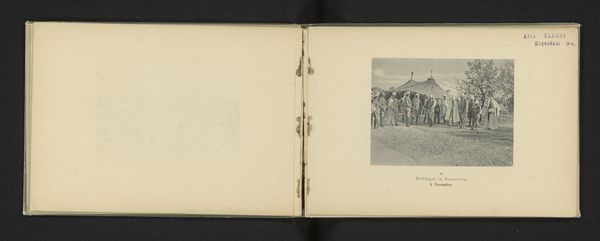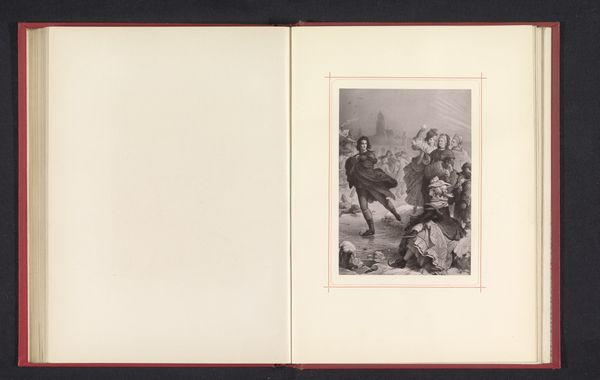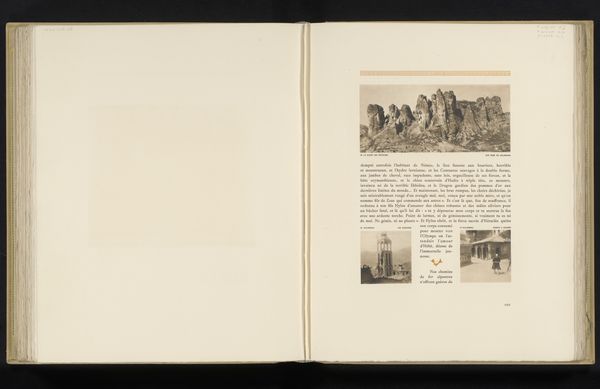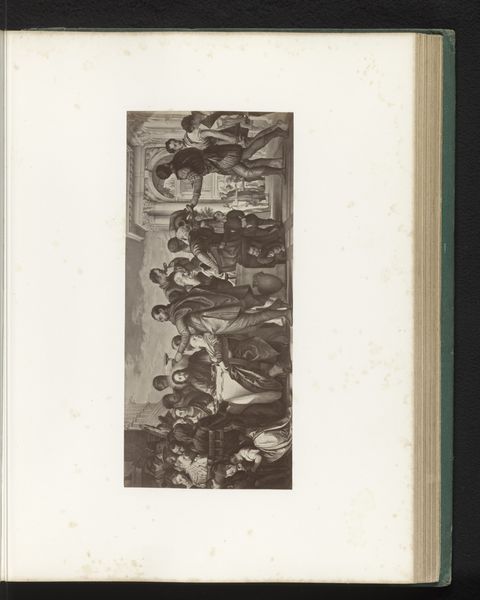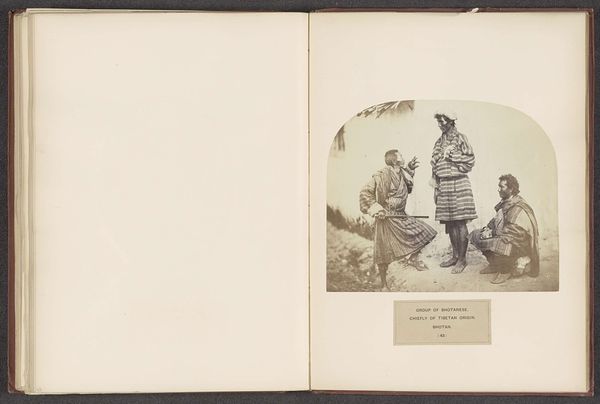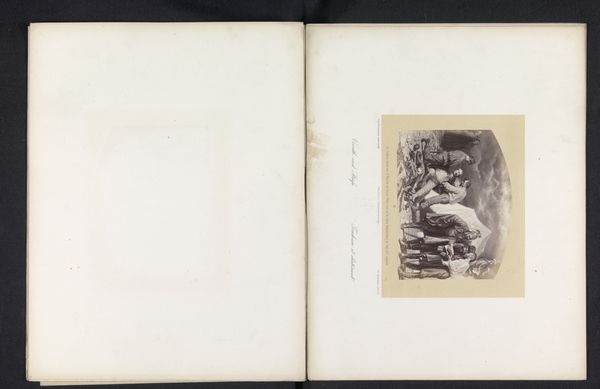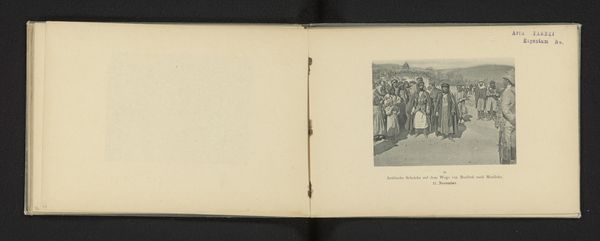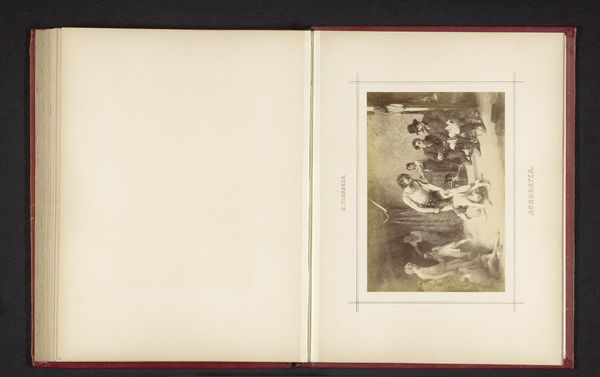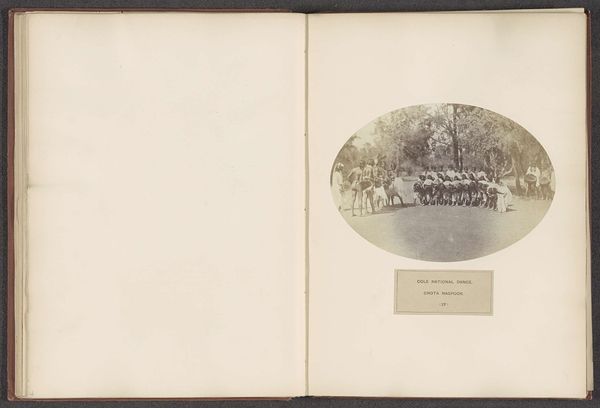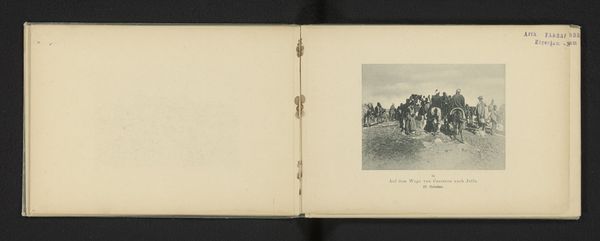
photography
#
portrait
#
photography
#
group-portraits
Dimensions: height 140 mm, width 195 mm
Copyright: Rijks Museum: Open Domain
Curator: I’m struck by the rather imposing nature of this historical photographic print titled "Negen mannen en vrouwen van de Naga-stam met speren in Cachar" by Benjamin Simpson, taken sometime before 1868. There’s an undeniable weight to it. Editor: It does feel burdened, doesn't it? It’s this sepia-toned image in an oval crop depicting these individuals. They're caught looking slightly away. Are they self-conscious, do you think, about being represented? It has this unsettling aura of forced display. Curator: Forced indeed, or, at least, certainly shaped by its colonial context. This isn’t just a candid snapshot; it’s an artifact, evidencing both an encounter and the specific power dynamics at play. The men and women of the Naga tribe are purposefully posed with their spears. How are they intended to be viewed by audiences at that time? Editor: Precisely. And I am looking at how the spears and other hand-held instruments denote particular labor practices or roles within this Naga community. Are these for hunting, cultivating, perhaps more ritualistic in their functions? Simpson's choices as an artist and producer highlight an interest in materials, and a need for categorization based on the visible world of resources and craft. Curator: Right, and how do you suppose it functioned in the larger system of visual documentation of colonial India? Photography served as a tool for cataloging populations, creating racial hierarchies, all presented with a veneer of scientific objectivity. These kinds of anthropological photographs were distributed as scientific study. Editor: A seemingly objective “scientific” visual study such as photography can itself can become part of the means for exerting control. And how were the tools created? Is this the photographer, Simpson, acting as an authoritative figure by deciding the light and materials of the frame, as well as this very particular "realistic" style that we can see here? Curator: Undeniably so. This image serves as an unfortunate case study. These Naga men and women aren't simply being represented; they are being made into objects for scrutiny within the vast visual economy of colonialism. Editor: It is difficult for me to extract my material reading from the historical conditions that were present. Thanks for pointing it out, and I can now come to this with a greater appreciation. Curator: Likewise, it's always useful to think of the actual process, materials and labor that goes into its existence. Thank you.
Comments
No comments
Be the first to comment and join the conversation on the ultimate creative platform.
